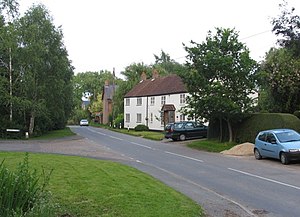Difference between revisions of "Template:FP-Yelling"
From Wikishire
(Created page with "{{#switch:{{{1}}} |pic=High Street Yelling - geograph.org.uk - 456186.jpg |cap=The High Street in Yelling, Huntingdonshire |text='''Yelling''' is a quiet village in Huntingd...") |
|||
| (One intermediate revision by the same user not shown) | |||
| Line 4: | Line 4: | ||
|text='''Yelling''' is a quiet village in [[Huntingdonshire]], set in a woodland valley close to the county's south-eastern boundary. It is a linear village with attractive thatched and half-timbered cottages and an air of peace. | |text='''Yelling''' is a quiet village in [[Huntingdonshire]], set in a woodland valley close to the county's south-eastern boundary. It is a linear village with attractive thatched and half-timbered cottages and an air of peace. | ||
| − | In its 12th Century church are four bells dated from 1666 and two stained glass windows in memory of a former rector and his wife. The noted evangelist Henry Venn was Yelling's vicar from 1771 until his death there in 1797, and a plaque commemorating him is set over the pulpit}}<noinclude> | + | In its 12th Century church are four bells dated from 1666 and two stained glass windows in memory of a former rector and his wife. The noted evangelist Henry Venn was Yelling's vicar from 1771 until his death there in 1797, and a plaque commemorating him is set over the pulpit.}}<noinclude>{{FP data}} |
| − | + | ||
Latest revision as of 14:01, 8 May 2021
YellingYelling is a quiet village in Huntingdonshire, set in a woodland valley close to the county's south-eastern boundary. It is a linear village with attractive thatched and half-timbered cottages and an air of peace. In its 12th Century church are four bells dated from 1666 and two stained glass windows in memory of a former rector and his wife. The noted evangelist Henry Venn was Yelling's vicar from 1771 until his death there in 1797, and a plaque commemorating him is set over the pulpit. (Read more) |
